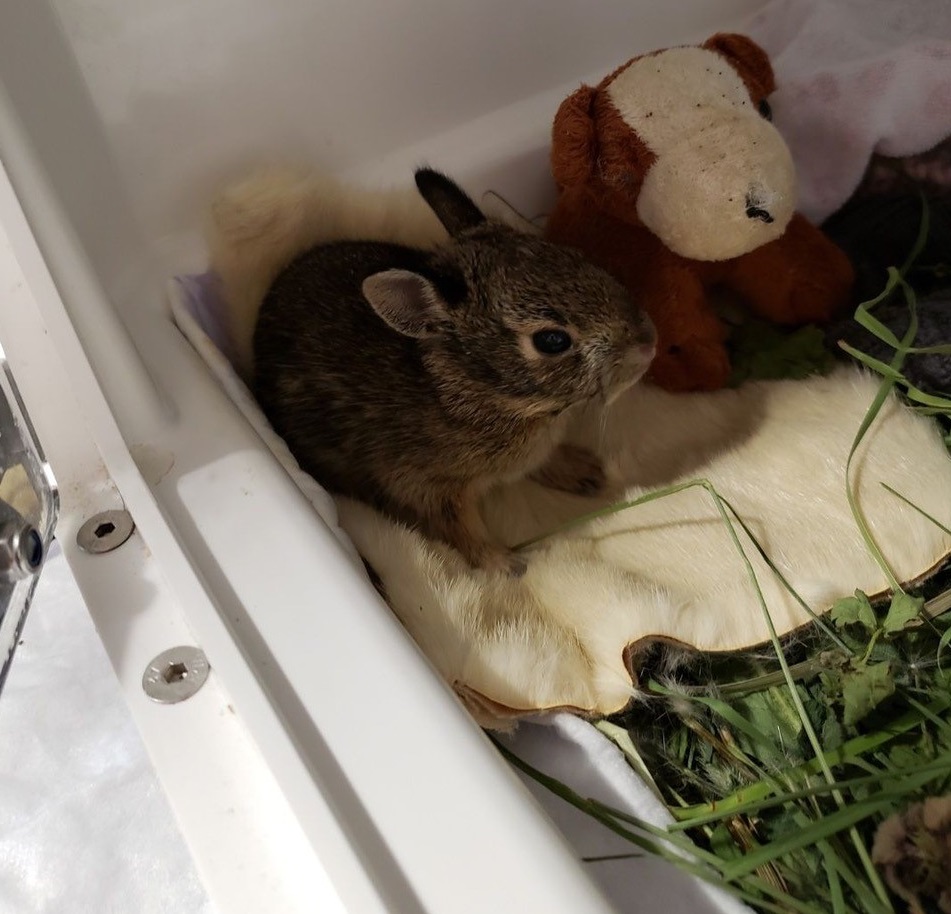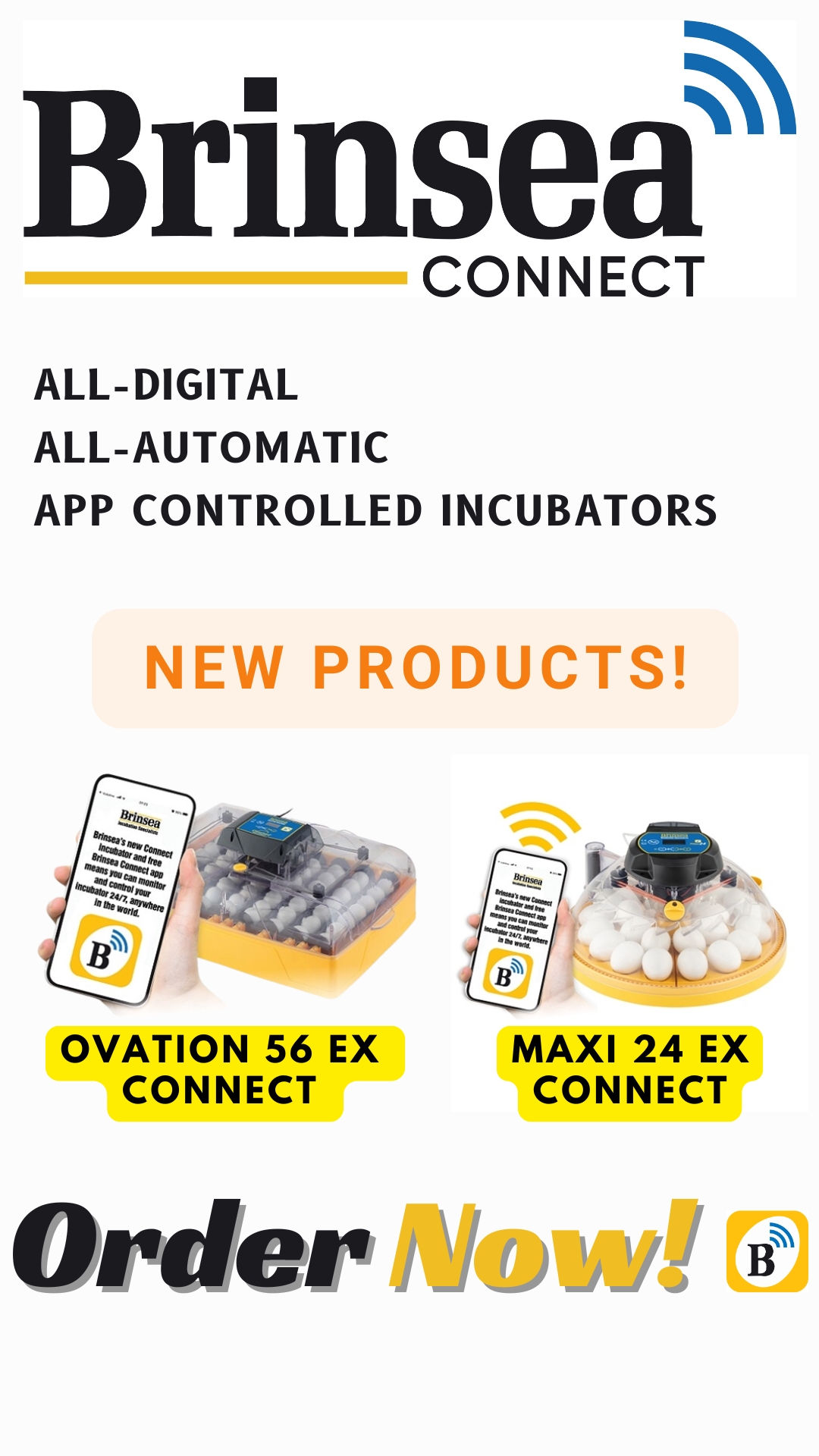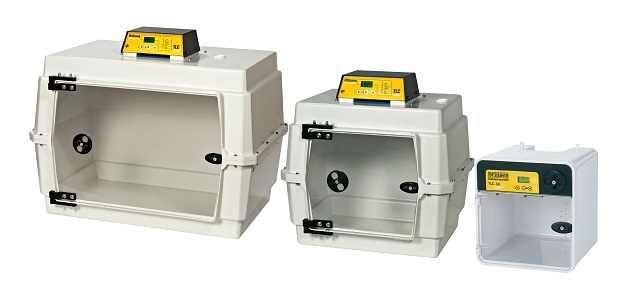
Incubators are Essential for Wildlife Rehabbers
While some rehabbers are species-specific, the statement that incubators are essential holds true for many different rehabbers across the board. Some animals, especially babies born without fur like bunnies, would not survive if not for the necessary warmth provided to them by incubators like our TLC models. Below is more information on why heat is so essential and a look at one of the species that needs it the most.
Key Steps for Rescued Baby Bunnies
- Provide Immediate Heat: Bunnies are born without fur and cannot regulate their body temperature. A controlled heat source is critical.
- Hydrate First: Bunnies may be dehydrated. Check for dehydration and provide fluids before attempting to feed.
- Handle with Care: Minimize stress by handling bunnies gently but securely, and limit the number of handlers.
-
Caring for Rescued Baby Bunnies
Wildlife rehabbers often receive nests of baby bunnies that were disturbed by lawnmowers, cats, or dogs. When a nest is brought in, it becomes imperative that the babies receive the proper amount of heat and care to prepare them for release back into the wild.
-
Heat: A bunny’s body temperature is 102-103°F. It's critical to help them maintain this using a heat source.
- Use a recovery incubator like our TLC models or a heating pad set to low.
- Carefully monitor the heat to ensure bunnies do not get too hot or too cold.
-
Hydration: It may not be possible to tell how long the bunnies have been abandoned, so it is important to hydrate them as soon as possible.
- How to Check: Gently pull on the skin on the back of the neck.
- Sign of Dehydration: If the skin stays pulled up ("tents") after you let go, the bunny is dehydrated.
-
Careful Handling: Bunnies are easily stressed out. To keep them from becoming too panicked and too used to humans, your contact should be minimized.
- If possible, designate one person as the primary handler.
- Hold bunnies securely to keep them from escaping, but gently to avoid injury.
-
Release: The goal is to return healthy bunnies to the wild.
- When: Bunnies should be at least 120 grams and six weeks old. A good behavioral sign is when they hop around and try to escape when handled.
- Where: Find an area with tall grass, underbrush, and a nearby water source.
- Weather: Check the forecast and release during a period of good weather.

Why our TLC Intensive Care Unit is the Best Tool for consistent source of warmth
Providing a warm, clean, and controlled environment is critical for the recovery of neonatal kittens. Their tiny bodies lose heat rapidly, making a professional incubator like Brinsea's TLC Intensive Care Units the gold standard. These units are trusted by veterinarians and rescue organizations to provide the consistent, gentle warmth needed for survival and give these vulnerable kittens the best possible chance of survival.
-
-
A Story from Sweet Binks Rescue, Inc.
We reached out to Pamela Hood at Sweet Binks Rescue, Inc to get more information on how our TLC incubators help with wildlife rehabilitation. She gave us a lot of great information!
“I use my Brinsea incubators mostly with critical care intakes with great success. Recently, I had a young bunny found in a swimming pool but was still alive. The finders got to me and I already had an incubator at 98 degrees and kept the bunny in it for a couple hours. The cottontail recovered and was eventually released.
I do not ‘raise’ wildlife long-term in the incubator but use it mostly on intakes or newborns. Because neonate squirrels, bunnies, opossums, skunks, and most mammals thermoregulate with each other for warmth, it is critical for the very young to get rewarmed at a consistent, controlled temperature.
Storm victims, which we just had, are definitely helped by immediate care in a Brinsea incubator. I also use three EcoGlow heat plates for young waterfowl and game birds. Love the adjustable height. These are the tools we need and use to successfully rehabilitate so much wildlife.”
We love hearing success stories from rehabbers who use our incubators!
-
Imitating Nature
The end goal for every wildlife rehabber is to release a healthy animal back into the wild who is capable of fending for itself. This goal is accomplished by imitating nature as closely as possible and by limiting human interaction. In the wild, bunnies are given warmth and security from their mothers, which is what our TLC animal intensive care units or recovery incubators offer them.


